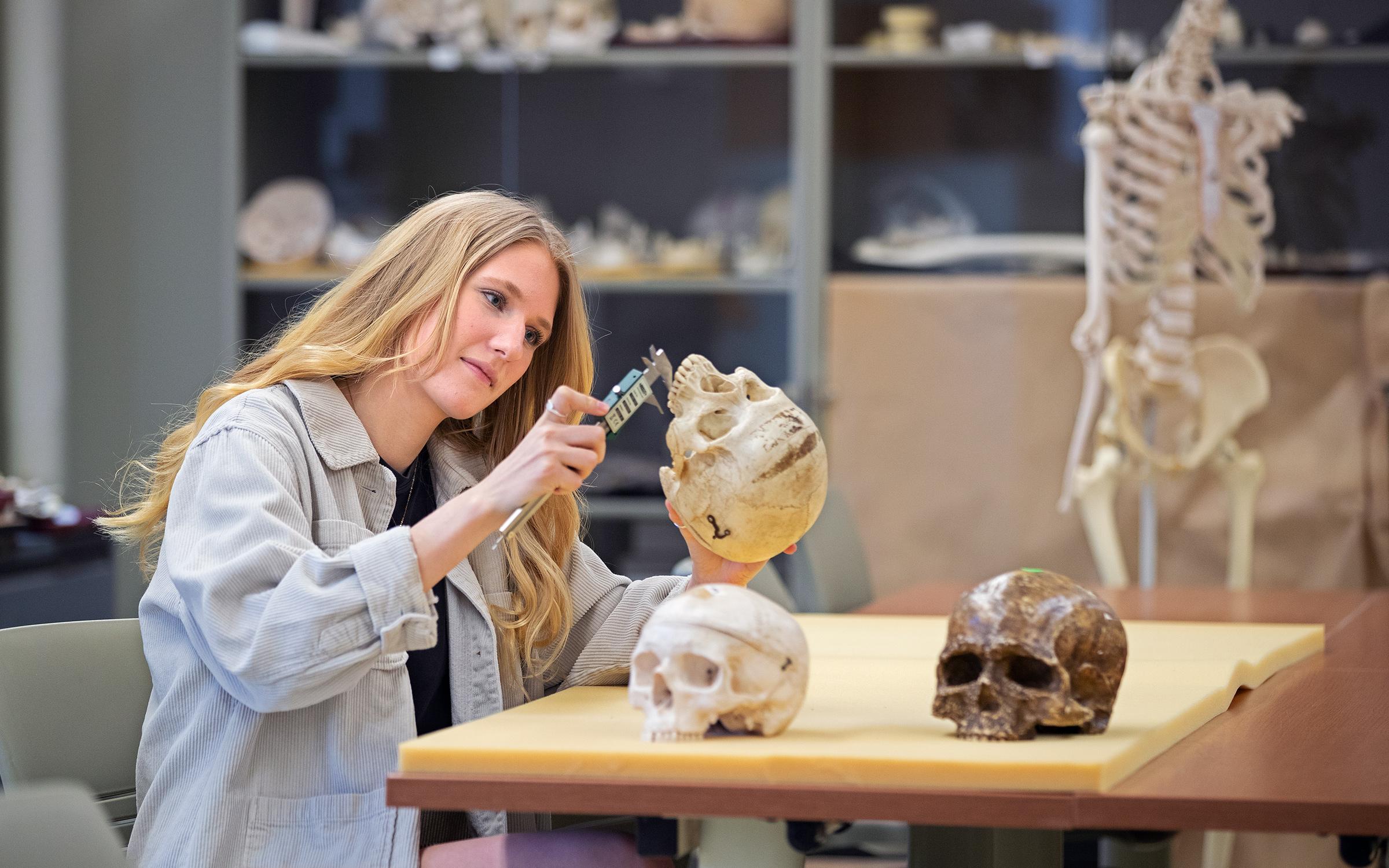A lifelong curiosity about the inner workings of humankind brought Alexandra Sveshnikova '25 to the SUNY Potsdam Department of Anthropology. The fire of that curiosity was fueled by a research trip to Kenya during the summer of 2023, where she was part of a cutting-edge examination of our origins and the history that preceded human tenure on Earth.
Alexandra joined SUNY Potsdam Associate Professor of Biological Anthropology Nasser Malit and more than 20 researchers and experts from around the globe at several sites in the remote Turkana Basin—part of the Turkana Miocene Project to understand how climate change shaped evolution from 23 to five million years ago.
“I was beyond excited to learn and work alongside experts in the field. Participating in this type of fieldwork will help me immensely with my future endeavors.”

The project, funded by a $2.7 million grant from the National Science Foundation’s Frontier Research in Earth Science Program, examined how climate shifts and tectonics impacted Miocene ecosystems and shaped the emergence of human ancestors and their primate relatives. Following fieldwork, Alexandra accompanied Nasser to the city of Nairobi for laboratory work on their discoveries. As a final project, she compared the data of modern primates with those she observed in the field.
Alexandra contributed to an ambitious project that was both multinational and multidisciplinary. It encompassed field, lab and modeling studies covering tectonics, vegetation, climate and evolution—all to create a model of evolution integrated with crustal lift data from the region.
While geologists chart the changes in the earth, a paleoclimate group examines minerals, rocks, teeth and plant matter for clues to changes in rainfall, vegetation and climate patterns due to crustal lifting of the East African Rift. Nasser focused on paleontology to link these changes to shifts in prehuman mammalian communities, which could shed light on why some evolved into human lineages while others led to modern primates.
“I chose Potsdam primarily because of the strength of its anthropology department. Not many schools have an anthropology department and archaeological studies program.”
“Alexandra worked with various scientists to learn the geology of the basin,” Nasser explained. “She also accompanied the climate people to learn how data in this field is derived and worked with the paleontologists in documenting fossils. After the end of fieldwork, she focused on assessing the molar sizes of various primates to look for patterns in the evolution of the primate lineages. This was a remarkable experience for her career.”
After her time at the Kenya National Museum, Alexandra worked with specimens from the Central Highlands of Kenya, focusing on research surrounding Mount Kenya in areas that had not yet been extensively studied. “A lot of new discoveries are being made there, which could change the trajectory of our understanding of evolution,” she said.
For this portion of her trip, Alexandra studied two medieval burials, measuring long bones and observing cut marks that might indicate stone tools being used in mortuary practices.
"I compiled comparative data, and the measurements were used to determine sex, stature, ancestry, and climate adaptation of the skeletons found in Kenya. I am currently working on refining my report and combining my research with some work that Dr. Malit is doing so that we can hopefully present at a paleontology conference in Denver, Colorado in the spring of 2025, and then move toward publication. I also presented at the Bioarchaeologists' Northeast Regional Dialogue conference in October of 2024," she said.
Alexandra plans to share her findings at the SUNY Potsdam Learning & Research Fair, present at a regional conference, and publish her work in the Collegiate Anthropologist, a journal of the Department of Anthropology.
Alexandra, who is pursuing dual Bachelor of Arts degrees in anthropology and psychology, prepared for her trip by working in SUNY Potsdam laboratories to examine molars in ancient humans and non-humans for clues to evolutionary patterns. Funded by SUNY Potsdam's Kilmer Research Grant, Alexandra had lodging and food expenses offset during her trip to Kenya.
“Teeth are the most common specimens found in paleoanthropological fieldwork, which is why I focused on them during the semester before the trip,” she explained.
Alexandra has always been fascinated by the natural world and its diversity. But it wasn’t until she took her first anthropology course at SUNY Potsdam that she glimpsed a possible life path—one where she could look for answers to nagging questions about human behavior.
“Here was a discipline that tackles what it means to be human, what it is that connects all cultures across all times and places,” she reflected. “I chose Potsdam primarily because of the strength of its anthropology department. Not many schools have an anthropology department and archaeological studies program.”
In addition to her trip to Africa, Alexandra spent her entire junior year studying in Greece, to see the world through the lens of other cultures. She credits some of her enthusiasm to “incredible” professors who are accessible and whose willingness to work with her directly enriches her research and projects.
“When I met with a different professor during the semester before my trip to Africa, excitedly talking about the upcoming trip, he had responded, ‘You realize you’ll be participating in groundbreaking research, right?’ That’s when the magnitude of the trip hit me,” Alexandra said. “Working on that project was a once-in-a-lifetime opportunity.”
Article by Bret Yager, Photos by Jason Hunter
